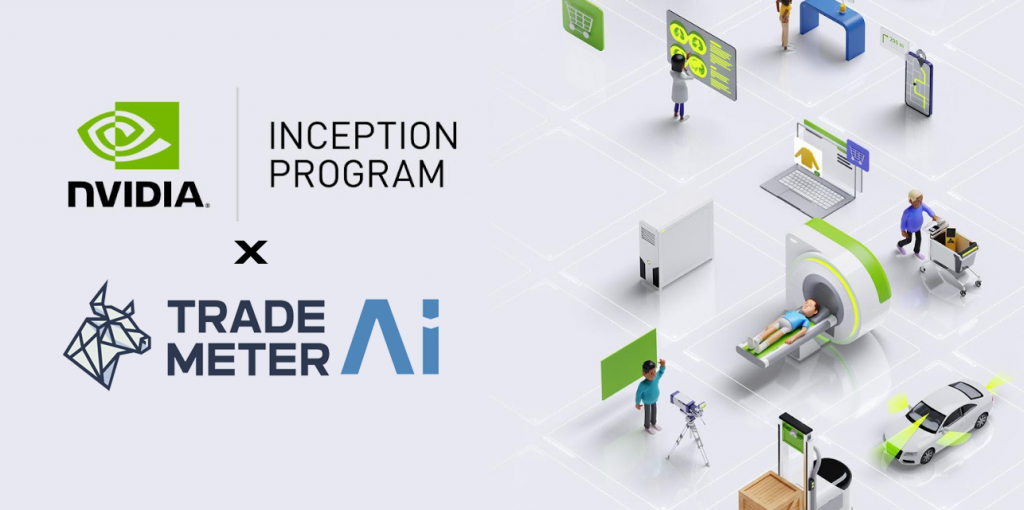20 Recommended Tips For Picking AI Stock Predicting Websites
20 Recommended Tips For Picking AI Stock Predicting Websites
Blog Article
Top 10 Ways To Evaluate The Accuracy Of The Data And Origin Of Ai Stock-Predicting/Analyzing Trading Platforms
It is crucial to assess the accuracy of the data and the sources utilized by AI-driven trading platforms as well as stock prediction platforms in order to get accurate and reliable data. A poor quality of data could lead to flawed predictions, to financial losses or a lack of trust to the platform. These are the top 10 suggestions for evaluating data quality and sources:
1. Verify the Data Sources
Verify where the data comes from: Be sure to use reputable and well known data suppliers.
Transparency. Platforms should make their data sources clear and regularly updated.
Don't rely solely on one source: reliable platforms will typically combine data from multiple sources to reduce the chance of bias.
2. Examine the freshness of data
Real-time data is different from. data delayed: Find out if your platform offers delayed or real-time data. Real-time trading needs real-time data. Delayed data will suffice in long-term analysis.
Update frequency: Check if the information is up to date.
Historical data consistency: Check that the data from the past is clear of any gaps and anomalies.
3. Evaluate Data Completeness
Find out if there is missing or incorrect data.
Coverage: Make sure the platform provides a broad variety of markets, stocks indexes, and other equities that are relevant to your trading strategies.
Corporate actions: Make sure that the platform contains stock splits (dividends) as well as mergers as well as any other corporate actions.
4. Accuracy of test results
Cross-verify data : Check the platform data with that of other reliable sources to guarantee consistency.
Error detection - Search for outliers and erroneous prices or financial indicators that have not in line with.
Backtesting: Use data from the past to backtest trading strategies and check if the results align with expectations.
5. Granularity of data can be determined
Level of detail: Ensure the platform provides granular data, such as intraday prices and volumes bid-ask spreads, as well as the depth of an order book.
Financial metrics - See whether there is a detailed financial statement (income statements or balance sheets, cash flows) and key ratios included (P/E/P/B/ROE and so on.). ).
6. Clean up and processing of data
Data normalization: Ensure the platform normalizes data (e.g. making adjustments for splits, dividends) to ensure consistency.
Outlier handling: Examine how the platform deals with outliers or anomalies in the data.
Incorrect Data: Verify whether the platform is using trusted methods to fill in data points that are missing.
7. Examine the data's to determine if they are consistent.
Timezone alignment align data in accordance with the same timezone in order to prevent any discrepancies.
Format consistency: Check if the data is in the same format (e.g., currency, units).
Cross-market consistency: Verify that the data from various markets or exchanges is harmonized.
8. Determine the relevancy of data
Relevance to the trading strategy Make sure the information is in line with your style of trading (e.g., technical analysis and quantitative modeling, fundamental analysis).
Feature selection: Check whether the platform has relevant features (e.g. macroeconomic indicators, sentiment analysis or news data) which can improve forecasts.
Verify the security and integrity of your data
Data encryption: Ensure that your platform has encryption in place to protect data storage and transmission.
Tamper-proofing : Check whether the data hasn't been altered by the platform.
Conformity: Check to see whether the platform meets laws on data protection (e.g. GDPR, CCPPA, etc.).).
10. Transparency of the AI model's transparency on the Platform could be testable
Explainability - Make sure that the platform provides information on the way in which the AI model utilizes the data to generate predictions.
Bias detection: Determine whether the platform monitors and corrects biases within the data or model.
Performance metrics. Analyze the performance metrics like precision, accuracy, as well as recall to determine the reliability of the platform.
Bonus Tips:
Reviews and feedback from users Utilize user reviews and feedback to evaluate the trustworthiness of a platform as well as the accuracy of its data.
Trial period. You can try the demo or trial for free to test out the software and its features.
Customer support: Make sure your platform has a robust support for problems related to data.
Follow these tips to assess the data source and quality for AI stock prediction platforms. Make informed decisions about trading using this data. Read the top rated see on ai trade for website examples including ai day trading, ai trading software, best stocks to buy now, ai copyright trading bot, ai copyright signals, ai chart analysis, ai copyright trading, artificial intelligence stocks, ai investing, stock analysis app and more.
Top 10 Ways To Evaluate The Scalability And Accuracy Of Ai-Based Stock Trading Platforms
To ensure that AI-driven stock trading and prediction platforms can be scaled as well, they should be able to handle the ever-growing volume of data and complexity in markets, as well as user demands. Here are 10 top tips on how to assess scalability.
1. Evaluate Data Handling Capacity
Tips: Determine if the platform is able to process and analyze large datasets.
Why? Scalable platforms have to handle growing data volumes without compromising performance.
2. Test the Real-Time Processing Capabilities of your processor
Check the way the platform handles real-time streams of data, including stock prices and breaking news.
Why: Trading decisions are made in real-time, and delays could lead traders to miss out on opportunities.
3. Cloud Infrastructure Elasticity and Check
Tips: Make sure that your cloud platform (e.g. AWS, Google Cloud or Azure) and is able to dynamically scale resources.
Why? Cloud platforms allow flexibility. The system can scale up or back down depending on the demands.
4. Algorithm Efficiency
Tips: Assess the computational efficacy of AI models (e.g., deep learning or reinforcement learning) used for predictions.
Reason: Complex algorithmic structures can be resource-intensive. Optimizing them is essential to scale them.
5. Find out more about Parallel Processing and Distributed Computer Systems.
Tip: Determine if a platform uses parallel processing or distributed computing frameworks.
What are they: These technologies speed up the processing of data and allow for analysis across many nodes.
Examine API Integration, and Interoperability
Tip Try to test the platform's capacity to interface with APIs that are external (e.g., market data providers, brokerage APIs).
Why: Seamless Integration ensures that the platform is able to adapt easily to new data sources, trading environment as well as other aspects.
7. Analyze User Load Handling
To test the performance of your system, try simulated high traffic.
The reason: The performance of a platform that is scalable is not affected by the increase in users.
8. Examine the model of Retraining and its adaptability
Tip: Check how frequently the AI model is trained and with what efficiency.
The reason is that markets are always shifting, and models must to evolve quickly to remain precise.
9. Verify that Fault-Tolerance and Redundancy are in place.
TIP: Make sure the platform is equipped with failover features, and also has redundant systems in the event of software or hardware failures.
What's the reason? Trading downtime can be costly, so the ability to tolerate faults is essential to allow for the scalability.
10. Monitor Cost Efficiency
Tip: Calculate the costs of expanding your platform. Consider cloud resources, data storage and computational power.
What is the reason: The expense of scalability shouldn't be unsustainable. Thus, it's important to balance performance with costs.
Bonus Tip: Future-proofing
Check that the platform has been designed to incorporate emerging technologies (e.g. quantum computing or advanced NLP) and be able to adjust to changes in the regulatory environment.
If you focus on these elements you will be able to assess the scale of AI stock prediction and trading platforms, making sure that they are reliable, efficient and ready for future growth. Have a look at the top rated read full report about ai trading bots for more tips including best ai stocks to buy, stock analysis app, best ai stocks to buy now, stock market ai, ai investing tools, best stock analysis app, best stock analysis website, best ai copyright to buy, best ai stocks, best stock analysis website and more.